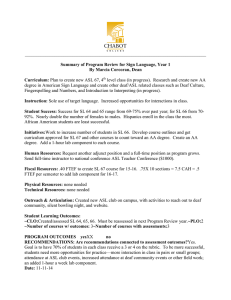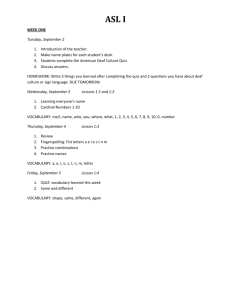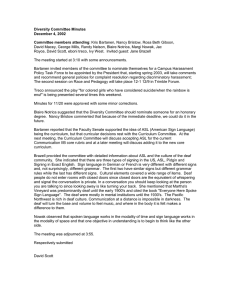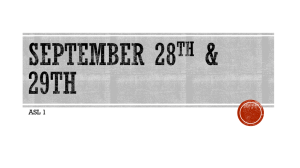DOCUMENTATION AND ANALYSIS OF LANGUE ... D'IVOIRE (LSCI) Language of presentation: ASL (as used in Ivory Coast)
advertisement
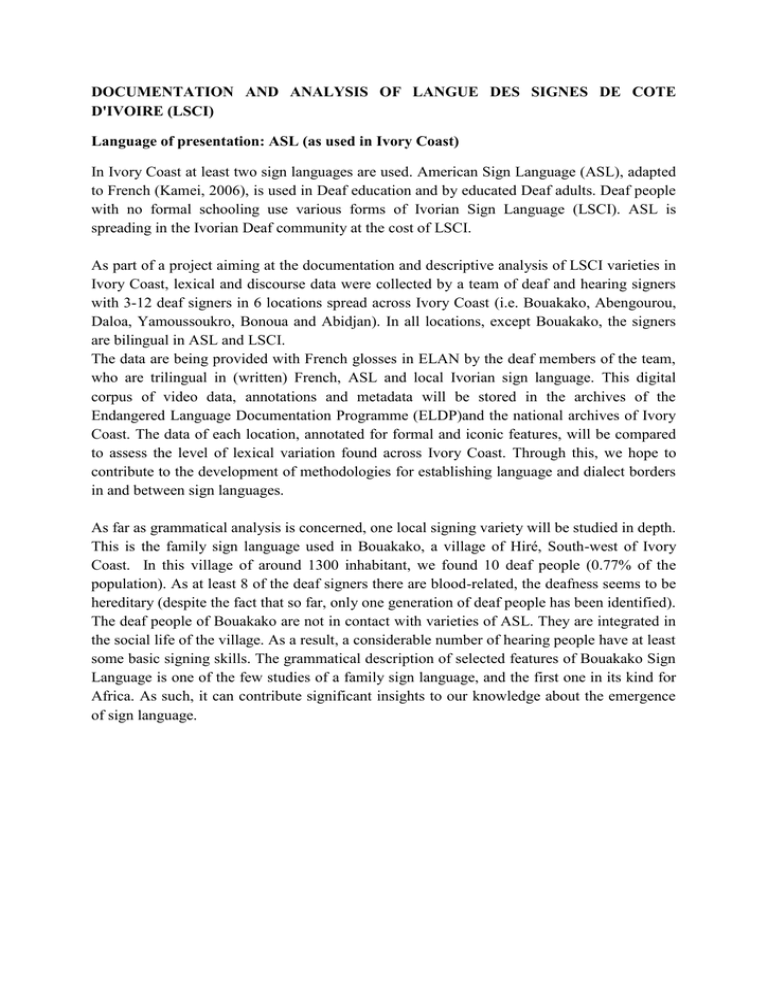
DOCUMENTATION AND ANALYSIS OF LANGUE DES SIGNES DE COTE D'IVOIRE (LSCI) Language of presentation: ASL (as used in Ivory Coast) In Ivory Coast at least two sign languages are used. American Sign Language (ASL), adapted to French (Kamei, 2006), is used in Deaf education and by educated Deaf adults. Deaf people with no formal schooling use various forms of Ivorian Sign Language (LSCI). ASL is spreading in the Ivorian Deaf community at the cost of LSCI. As part of a project aiming at the documentation and descriptive analysis of LSCI varieties in Ivory Coast, lexical and discourse data were collected by a team of deaf and hearing signers with 3-12 deaf signers in 6 locations spread across Ivory Coast (i.e. Bouakako, Abengourou, Daloa, Yamoussoukro, Bonoua and Abidjan). In all locations, except Bouakako, the signers are bilingual in ASL and LSCI. The data are being provided with French glosses in ELAN by the deaf members of the team, who are trilingual in (written) French, ASL and local Ivorian sign language. This digital corpus of video data, annotations and metadata will be stored in the archives of the Endangered Language Documentation Programme (ELDP)and the national archives of Ivory Coast. The data of each location, annotated for formal and iconic features, will be compared to assess the level of lexical variation found across Ivory Coast. Through this, we hope to contribute to the development of methodologies for establishing language and dialect borders in and between sign languages. As far as grammatical analysis is concerned, one local signing variety will be studied in depth. This is the family sign language used in Bouakako, a village of Hiré, South-west of Ivory Coast. In this village of around 1300 inhabitant, we found 10 deaf people (0.77% of the population). As at least 8 of the deaf signers there are blood-related, the deafness seems to be hereditary (despite the fact that so far, only one generation of deaf people has been identified). The deaf people of Bouakako are not in contact with varieties of ASL. They are integrated in the social life of the village. As a result, a considerable number of hearing people have at least some basic signing skills. The grammatical description of selected features of Bouakako Sign Language is one of the few studies of a family sign language, and the first one in its kind for Africa. As such, it can contribute significant insights to our knowledge about the emergence of sign language.


